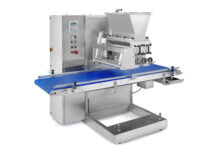In a world where appearance matters more than essence, it could only end up this way. They call it “Food Design” and it involves creating food that you can eat with your eyes, a technique that aims at changing the relationship between food and the consumer. The ultimate goal is to amaze, with no consideration for the nutritional value of food, treating it rather as a raw material for use in constructing edible objects. It is not such a novelty. For the past 20 years or so different parts of the Western world have maintained that gastronomy is not just a matter of ethics, but also of aesthetics. Ethics and aesthetics are a pair of words that probably complement each other only in principle. In fact, care must be taken because it is easy to cast essence (ethics) aside for the sake of appearance (aesthetics). In fact, meat, pasta, chocolate, vegetables and other food items were once products of agriculture and industry for the exclusive scope of feeding people. Now they are utilized as raw materials for food design objects to be consumed at exorbitant prices in futuristic restaurants scattered around Europe and North America. These products might be pleasing to the eyes, maybe even to the palate, and most certainly gratifying for aesthetic reasons… but rarely for ethical ones. Ethics is about producing nutritious food at a low cost to deal with the drastic reduction in food consumption resulting from an economic-financial crisis that has been gnawing at continents worldwide and for which no end seems to be in sight. Ethics is what “Feeding the Planet”, the theme of the upcoming Expo 2015, is all about – most importantly feeding the planet with products from the poorest nations of the world. Drastically reducing food waste is another ethical issue, a phenomenon that occurs for different reasons from North to South all over the globe. Ethics also plays a major role in the organization of our future food supply, when there will be 8 billion of us in 2030 and in 2050, according to FAO estimates, we will reach 9 billion inhabitants. We have to re-think food and at the same time reflect upon how to safeguard our resources and the environment. Limited possibilities to expand agricultural areas, combined with scarcity of water and the climate change already in progress, all aggravate even more the concerns about supplying food raw materials. Today the possibility of new food sources from insects is more than just a hypothesis. Currently two billion people in the world are consuming these and the practice is growing. Certainly, for us Westerners, this is not a simple issue, even though unknowingly we might already be consuming proteins sourced from insects. If that is the case then, it is not really a question of ethics or aesthetics. It is not critical that food meets design criteria but it certainly does matter that ingredients are clearly identified so that consumers are aware and can freely choose the food they eat. This also goes for GMO and must pertain as well to ingredients that are extracted or in some way, sourced from insects. Aesthetics applied without ethics is a waste of time, whereas food ethics is the outcome of a quest pursued by both producers and consumers.




